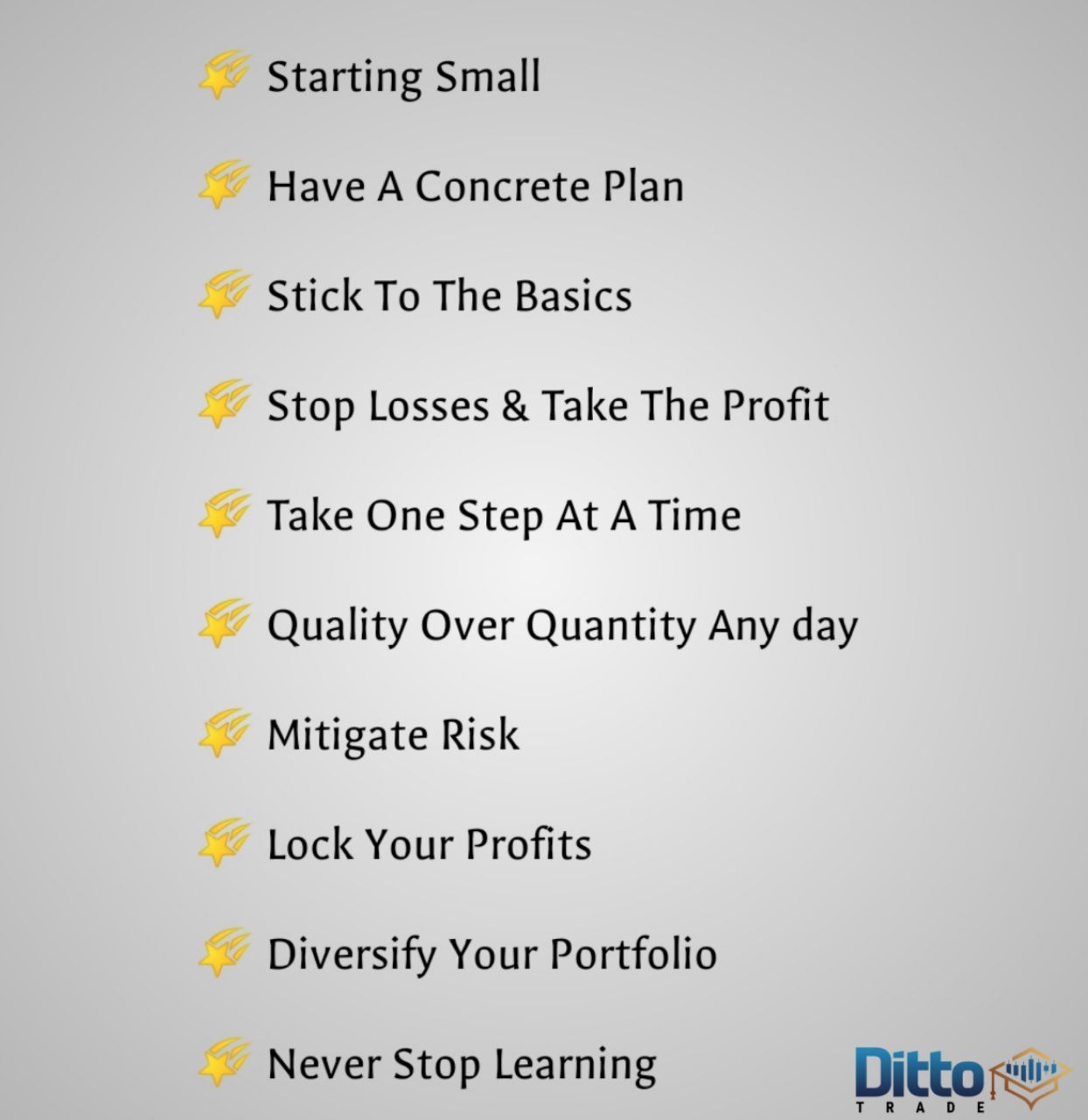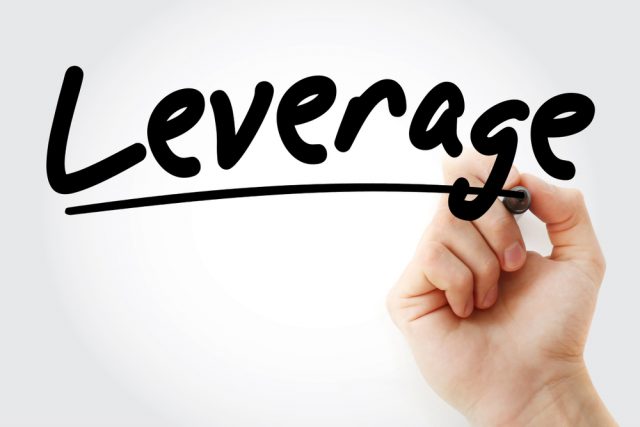What is Leverage Trading?
Leverage trading, AKA Margin trading means borrowing the funds to increase your bet while you trade. It is an aggressive mode of trading where experienced traders take extra risk for the possibility of additional reward. This is something traders do when they think that the odds are in their favour. If you want to trade using leverage, you must open a margin account with any of the exchanges in the market that provide leverage trading services. Once done, you can borrow the money offered by another user or exchange itself or a peer to peer loan option. The money which is in your margin account is used as collateral for the loan that you take. In very simple words, leverage trading lets you trade with more money than you actually have in your account. The basic notation of leverages is in ratios or with an ”X” next to the leverage. Hence the notation of three times leverage would be 3:1 or 3x.
Example 1
Let’s consider a cryptocurrency example. Let’s say you have $400 with which you can buy an Ether. For some reason you know for sure that the price movements of Etherium in the near future. So you decide to trade aggressively and do ten times (10x) leverage. This means you bought 5 Etherium with only $400 you have by borrowing the other $1600, and if Etherium increases by 5 dollars you get five times the gains. You get five times more. For every one dollar gain on Etherium, you get 5 dollars. This is the beauty of leverage trading. You can take the profits from this trade and repay the principal amount you borrowed to the exchange or any individual. But in the instance of you losing the trade, you will have have to bear the loss, and you will still have to repay the money that you have borrowed.
Example 2
Consider Joe has $2000, and he is sure about the future price movements of a particular currency, let’s say, British Pound. So Joe decides to 10x leverage trade in any of the major forex exchanges. So now Joe is dealing with $20000 capital. He ‘doesn’t have $20000, but by using 10x leverage in the trading platform, he is playing with $20000. If everything goes as per ‘Joe’s plan and he makes roughly around 10%, he is going to make $2000 profit which he could have been impossible if he chose to trade conventionally but not margin trade.
Now you know that you can make a lot of profits by margin trading if and only if you are extremely sure about the trade you are going to take. Otherwise, it is super risky as you are supposed to return the money that you have borrowed to the exchange with applicable interest charges. Having said that, all the existing exchanges doesn’t charge you interest. But some credible platforms charge you a minor interest for the money that you borrowed. This means if you are trading with leverage any currency and bet on the price of that asset going up, but it goes down or stagnates, you will have to hold on to that currency. This will rack up the interest charges in the cases where the interest is charged. But if the price goes down, you will owe the money that you have borrowed along with the interest charges even though you lost your money. The rule of returning the money that you have borrowed to the corresponding parties, irrespective of the result of that trade is what makes the leverage trading extremely risky.
How much leverage is allowed?
Leverages can range from 2x - 500x depending on the exchange in which you are willing to margin trade. The size of the leverage also depends on the asset class you are willing to leverage trade. There are some credible brokers like ‘Coinexx’ & ‘SimpleFX’ that offer leverage up to 500x for selected asset classes. For example, Coinexx offers a maximum leverage of 500x on Forex, indices, and commodities. But they only offer 5x leverage on cryptocurrencies. The 500x is the maximum which is proportionately applied to the exotic, minor and major currency pairs. For example, let’s say your account holds 500x leverage. In this case, your maximum leverage for different instruments in Coinexx will be as follows. For Commodities - 500x, for Indices - 500x, for major currency pairs - 500x, for minor currency pairs - 300x, for Exotic currency pairs it ranges from 200x to 50x depending upon the pair. But they only offer 5x leverage on Cryptocurrencies. Thus, leverage will proportionately change with the asset class you choose to leverage.
 2x leverage is highly recommended for novice traders and as higher margin trading is safe only for advanced and professional traders. One should not get into margin trading unless they know proper Technical Analysis. Most of the leverage trading is about managing risk to reward. There are new regulations in Europe that restrict traders to leverage a maximum of 30x. Any leverage more than 30x is forbidden. Also, in most of the Europian brokerages, 2x is the maximum leverage you can take for several asset classes including cryptocurrencies.
2x leverage is highly recommended for novice traders and as higher margin trading is safe only for advanced and professional traders. One should not get into margin trading unless they know proper Technical Analysis. Most of the leverage trading is about managing risk to reward. There are new regulations in Europe that restrict traders to leverage a maximum of 30x. Any leverage more than 30x is forbidden. Also, in most of the Europian brokerages, 2x is the maximum leverage you can take for several asset classes including cryptocurrencies.
There are a lot of exchanges that allow you to borrow money by giving you a margin. Every margin comes with a liquidation price, and if the price of the currency you are trading hits the liquidation price, you are going to lose everything that you have put in the trade.
As your leverage increases, the value of your trade increase and at the same time, the trade gets extremely risky.
How does Leverage Trading work?
First thing you need to remember is that you will need to have enough amount of funds to cover the trade you are taking. In case you ‘don’t have enough funds, your position will be closed automatically. It is also known as called in or liquidation. This means, even if the lender is willing to lend you their money for an interest fee to margin trade, any of the money lost and any interest fees paid will go out from your margin account. The exchanges also are letting you borrow their money, but they do not want to take the risk of losing that money they lent to you.
In margin trading, you can either leverage long or short. When you long you bet on the scenario where the price will be going up, and if it goes down, you lose the money. When you short, you bet on the scenario where the price will be going down, and if it goes up, you lose the money. The size of your loss is based on the total size of the bid. The position gets closed at the price which is pre-set by you. Else it ‘doesn’t get closed at all until you close it manually. Te exchange calls your position in if you run out of your funds allotted to that position.
What is Margin Call?
‘Let’s consider a scenario where your total balance in your Marginal account falls below the MMR (Maintenance Margin Requirement) because of the price going in entirely opposite direction than to your actual bet, the exchange will send a request to get back their funds from you or they can start liquidating your assets to get their lent money back. You also can offset the marginal call by depositing extra funds to your marginal account. You get to increase the margin ratio and also can improve your call price when you deposit these extra funds.
Leverage trading or Margin trading is nothing but betting on the money that you have borrowed and which is not yours. Since it is not your money that you are betting on, it is crucial to be extremely careful about the trades you take. Professional traders generally use this trading style. Since these traders are aware of advanced trading concepts like Technical Analysis and Risk Management, it is not recommended for beginners to leverage trade, and if you are planning to leverage trade, make sure you have at least several months of trading experience.
You are essentially swapping out contacts with other buyers and sellers utilizing any of the exchange platforms that support leverage trading. If you are going short, you are swapping the contracts with someone who is going long. Likewise, if you are going long, you are swapping with someone is shorting or in other words, going short. Leverage or margin is nothing but the amount of assets that you decide to borrow. The more leverage you choose, the higher the risk. Leverage ranges from 2x to 500x depending on the exchange you choose to trade. As the leverage you want to trade with increases, the funds you borrow also increases. In these cases, the risk and reward will go higher. If you win the trade, you make a hell lot of profit, but if you lose the trade, the chances of you getting liquidated are at the maximum.
The price at which your marginal account balance is entirely wiped out is known as Liquidation Price. This price is displayed to you before even you start the trade. It is also visible to you on the screen during the entire time of your trading so that you can keep track. Because of this, you will never have to worry about figuring out the Liquidation price and keep referring to it whenever required. Almost all of the exchanges that let you leverage trade have inbuilt calculators which will display you real-time Liquidation Price.
Shorting and Longing are the basic principles on which Leverage trading works. You take a short position when you are betting that the price of a respective currency will decrease. In the same way, you take a long position when you are betting that the price of a respective currency will increase. The liquidation price of your trade will be higher than the market price when you are shorting. But when you are longing or buying, the liquidation price will be much lesser than the market price.
Making money or taking profits by margin trading is like playing with a double-edged sword. It is obviously more rewarding but also a lot riskier. But there are techniques using which you can minimize the risk involved in leverage trading, and you can maximize the reward by using a few techniques in your leverage trading activities.
Leverage Trading Strategies
Scaling in and Scaling out of your position is one of the most useful techniques to maximize profits and minimize losses in leverage trading. Layering your trades rather than depending on a single trade is the best way to margin trade.
For instance, let’s say you are trading with a $2000 capital and want to take a long position at $10,000, whereas the present position is somewhere around $10,500. Traders generally watch the price action of the currency all day and try to time that 5-minute window in order to get to the closest price of $10,000. But you can eliminate that part by simply setting multiple entries in the market. This would look something like $400 at $10,400, $400 at $10,300, $400 at $10,200, $400 at $10,150 and $400 at $10,100. This helps you in mitigating the risk just in case the price drops. All the entry points you have entered may not get filled while you scale in and out. For example, the price may only reach $10,400, but you’ll be at a way better entry point with the capital in the trade. It’s exactly opposite for the exit positions.
Buying & Selling Simultaneously, i.e. going long and short at the same time is one of the strategies that professional traders use to mitigate the losses in leverage trading. For you to implement this strategy, you need to have two accounts in an exchange in which you are planning to leverage trade. Setting up numerous accounts shouldn’t be a problem because you can register in end number of accounts without providing your personal information in most of the exchanges these days. Once the accounts are set up, in one account, you will have to set up a long entry position above the potential breakout while on the other account, you will set up a short position below the potential breakout. By doing this, you have a significant advantage as the breakout will have to happen in either of the directions.
Understanding the services provided by the exchanges can help you leverage trade more effectively. Effectively using risk management tools like Stop-loss, Market Orders and Limit Orders are some of the essential examples. Remember to use limit orders with the ‘post only’ feature checked for the majority of your trades you place. But there are instances where you should be using the Market Orders. Utilizing stop losses are highly recommended when leverage trading, especially when you are not next to your computer or when you are not monitoring the market and the price action. For everything else, the best practice is to stick to the limit orders.
Lastly, remember always to plan your trades much ahead of time and never ever trade in a rush. Because when you try to ‘catch a moving rocket’ or ‘catch a falling knife’, things don’t end up well for you. The more excited you are, the more idiotic your decisions become. So keeping the cool, using proper logic, trading without greed and sticking to your strategies can help you in making better decisions while you margin trade.
Want to succeed in the field of Leverage Trading? Follow these Golden Rules!

If you are new to leverage trading or if you are willing to start leverage trading, you will have to be extra cautious. You would have heard this a lot of times now, but that is because it is important to be extremely careful. One lousy trade in margin trading can change your life for good or bad. Since margin trading is very risky, you do not have the luxury to make mistakes. Especially when you are trading with leverages above 10x. Hence, performing risk management techniques for all the margin trades you take is crucial. With that said, below are some of the important steps you need to follow to master leverage trading.
Starting Small
You should be starting small if you are new to margin trading. 2x margin is most recommended for newbies. Understanding the risks of margin trading, and starting as little as possible is the best way to begin your leverage trading journey. The best hack to do it is to consider the money that you are investing in a leveraged trade is not yours anymore. By doing this, you won’t be overwhelmed by the result of your trade. Do not rush and have a small and simple portfolio. Remember that you have to walk before you run.
Have A Concrete Plan
It is essential to have a game plan before you leverage trade since there is a greater great risk factor involved here compared to conventional trades. Strategy and plan are the two things that separate professional trading from gambling.
Stick To The Basics
Leverage trading is different from traditional trading only in how capital works. Once you have an understanding of borrowing and repaying the margin amount, the leveraged trade becomes conventional trading. So stick to your basics and trade like you normally would do. Stick to the trading strategy that worked for you and never deviate from your basics.
Stop Losses & Take The Profit
Take out profits once you win the trade is a good practice. If you are margin trading, measuring risk to reward ratio is important. Stop orders, sometimes, can be used against you. So be cautious while you place these orders. There are instances where big industrial players push the price past the S&R. When this happens, your order might not be executed at the price you anticipated and closes you out at the price where can hardly make any more profits.
Take One Step At A Time
Mastering one proper strategy which works for you and is capable of producing consistent results can help you better than just partially knowing a thousand strategies. You don’t need anything out of this world to make you money in leverage trading. One simple yet effective strategy can make you a profitable margin trader. Traders who try to do a lot of things in so little time typically have more failure rate than success rate in the market.
Quality over Quantity Any Day
Overtrading is one of the most common mistakes that margin traders do. This may be because of one successful trade. Leverage trading can be addictive as soon as you win a couple of trades. This can be because of greed and human psychology. Chasing the market when the market is going through rough conditions is not a good decision to make in leverage trading. One should be extremely patient to wait for the genuine trading signals when they margin-trade in particular. These signals should be in such a way that it should have at least 85% probability of winning and less than 15% probability of losing it. When the markets are choppy and inefficient, being patient and waiting is the most important thing to do.
Mitigate Risk
No trade is 100% guaranteed. Even if you have the best trading strategy and even when the market conditions are best, you will need to do risk management for the trade to mitigate the loss. Setting up the Position size, placing Stop loss orders or hedging your position and taking lesser leverage are some of the ways you can mitigate the risk. Just remember that there are no absolutes in trading and nothing is 100% guaranteed.
Lock Your Gains & Diversify
As discussed before, take out the profits as you make in marginal trading. Once you realize that you are making huge amounts of money, it is important to cash in that money. You can use that money to diversify your portfolio by spreading your investments. If you can do this, you have already won the game.
Never Stop Learning
Trading can be addictive. Especially when you margin trade and see huge profits by leverage trading. Spend more time researching and knowing more about the developments that are happening in the market. In this ever-changing forex markets, there are some of the other innovations every day. Learning and acquiring knowledge is a continuous process, and you should never stop doing that.
Also, it is important to exercise and meditate as it can improve your focus. Along with that, spending time with your family and friends can relax your mind. You need that calmness when your only job is to see price action charts all day long.
We hope you got an idea on the basic of Leverage Trading, the way it works and some valuable information on how to succeed in this area. Marginal Trading is an interesting and adventurous way of trading and if you are a forex trader, you should consider trying it at least once. But make sure you are aware of the consequences before taking any decisions. Happy & safe trading!





